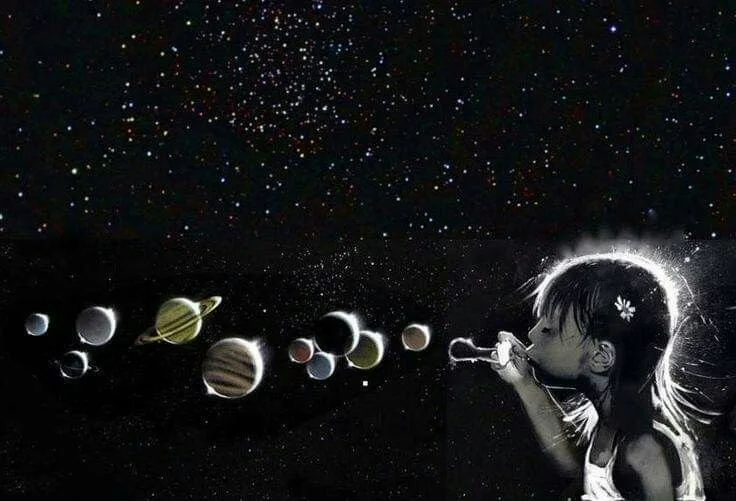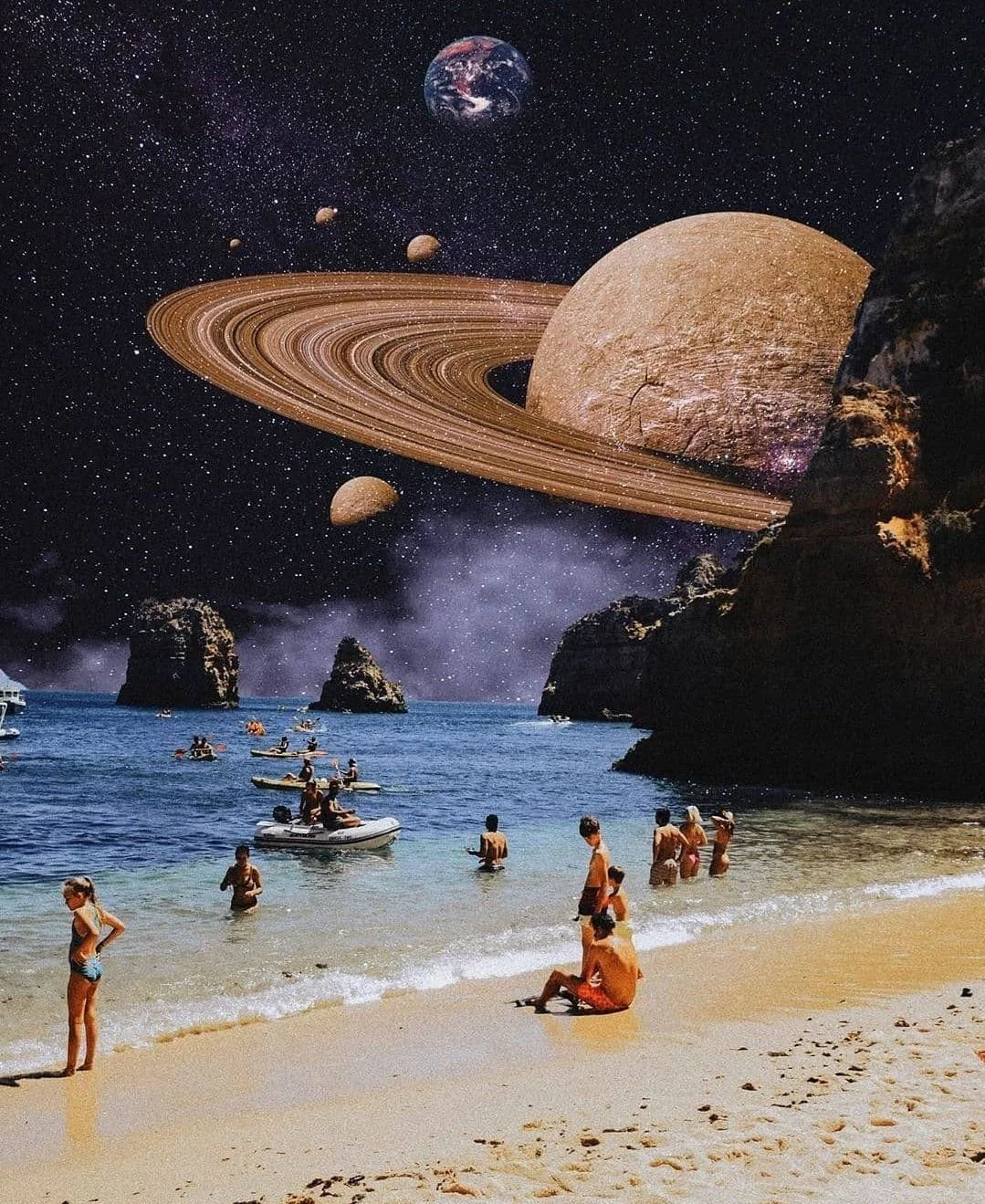Beyond the Telescope: A Case for People Science
Neil deGrasse Tyson changed my life. Not in the way a prophet does, but in the way a translator does — he made the language of the cosmos feel like something I had the right to understand. And yet, something’s missing. He once said that people use astrology to deflect responsibility, to blame the planets for their bad behavior. Maybe he’s right — or maybe astrology has evolved. Maybe what we’re seeing now isn’t deflection, but direction. A generation raised in collapsing institutions is learning to read the stars not to escape life, but to locate themselves in it. Science gave us the telescope; we’re just asking for the mic. Because we are the data now — our feelings, our patterns, our hunger for meaning. Welcome to people science.
Part I – The Shift
We’re living through what feels like the collapse of every institution we were told to trust. Religion. Education. Healthcare. Even science, for many. And yet, instead of fleeing into nihilism, we’re doing something quietly radical: we’re building new maps. In the spaces where doctrine used to be, we’re choosing pattern. In the places where dogma ruled, we’re choosing metaphor.
This isn’t regression. This is recursion. We’re spiraling back to the same ancient questions with sharper tools, softer hearts, and wilder imaginations.
Astrology, dismissed by many as unserious or unscientific, is becoming something else entirely: a language. A framework. A container. Not to tell the future, but to deepen the present. It’s not that we believe Mars made us cut bangs or that Mercury retrograde destroyed our group chat — it’s that we’re starving for shared reference points. Something other than productivity apps and personality quizzes.
Astrology gives us symbols, archetypes, invitations. It says, “Hey, maybe the way you feel isn’t random. Maybe it’s part of a larger rhythm you can learn to listen to.” That’s not dangerous. That’s deeply human.
Part II – The Trifecta
There’s a reason people are listening to comedians more than clergy right now. Pete Holmes talks about God the way a kid plays dress-up — with awe, humor, and a little irreverence. He gave me one of my favorite quotes, “God is the name of the blanket we put over mystery to give it shape.” Hasan Minhaj interviews Neil deGrasse Tyson with the intensity of someone who’s still trying to understand his father. These aren’t just funnymen. They’re philosophers with punchlines, high priests in sneakers. They’re doing what our institutions forgot how to do: translating complexity into meaning, without pretending certainty. And doing it with a punchline.
And Neil? Neil deGrasse Tyson is the bridge. He left the telescope for the microphone. He saw that the average person wasn’t going to pick up a physics textbook but might tune into The Daily Show. He became the charismatic translator of the cosmos. And now, respectfully, it’s time to widen the circle. To pass the mic—not because we don’t need science, but because we need people science.
Science describes the observable universe. But what about the felt one? The quiet griefs, the synchronicities, the patterns that repeat in your love life but not your lab results? That’s the edge we’re standing on now. The future won’t just be built in STEM fields — it will be co-authored by poets, comedians, philosophers, and mystics. Because it has to be.
Part III – Astrology as People Science
We don’t need astrology to be scientific. We need it to be useful. And lately, it has been. Not as a replacement for accountability, but as a mirror for self-awareness. It gives people a language for their inner world when therapy is inaccessible, religion is mistrusted, and traditional systems have failed. It asks you to get curious about your own patterns, not someone else’s rules.
For a generation drowning in content but starving for context, astrology provides shape. It says, “You’re not broken. You’re in a cycle.” That’s not delusion — that’s developmental psychology in archetypal drag.
And the beauty of it? It’s communal. Not dogmatic, not top-down, not institutionalized. You learn your chart, then you learn someone else’s. You see where your Venus meets their Mars, your Moon squares their Saturn. Suddenly, you’re speaking about needs, wounds, timing, desire — all without shame. It trains you in nuance. In paradox. In compassion.
Astrology doesn’t cancel science. It complements it. It’s a poetic system, a reflective tool. It helps us hold both the chaos and the choreography of being human. That’s people science. That’s the work.
Part IV – Teen Girls Know What’s Up
If you want to understand the future, watch what teenage girls are doing. Not because they’re trendsetters — that’s too shallow — but because they’re translators. They metabolize culture faster than most adults can name it. They bend language, redefine beauty, and find meaning in places the rest of us haven’t even looked yet.
Linguists trace the roots of our modern slang, vocal patterns, and even punctuation habits back to adolescent girls. In the 1400s, noblewomen influenced courtly speech. In the 1960s, they gave us Beatlemania and miniskirts. In the Tumblr era, they built an entire internet aesthetic from trauma, irony, and Lana Del Rey lyrics. Today? They’re making natal charts at sleepovers. They’re not asking, “What do I want to be when I grow up?” They’re asking, “Who am I when Mercury is in Pisces and I haven’t texted him back yet?”
Sure, we can laugh — but we’d be missing the point. What looks like frivolity is often sacred experimentation. These are the early architects of a new kind of emotional intelligence, one that blends intuition, pattern recognition, and self-awareness. They’re not waiting for permission to study themselves. They’re doing the work, in crop tops and capricious moods.
And guess what? It’s working. They’re building fluency in feelings. They’re creating digital oracles. They’re speaking astrology not just as a tool for understanding the self, but as a portal for rejoining each other. We should all be paying attention. Not to co-opt or correct, but to learn.
Conclusion – The Merge
We were never meant to choose between science and spirit. That was a false binary — a relic of fear dressed up as reason. The truth is, we’ve always needed both. We need the telescope to see the stars and the myth to make them matter. We need the equation and the metaphor.
Astrology won’t save us. But it might soften us. It gives us something to hold onto in the collapse — not as a life raft, but as a compass. It helps us say, “I’m like this,” and listen when someone says, “Me too.” It’s not about being right. It’s about being understood.
In a world that profits from division, astrology is a strange little rebellion: it invites connection. It asks us to see each other as complex, cosmic, contradictory — not broken, not other. It’s not perfect, and it doesn’t have to be. It’s a language, a mirror, a shared mystery.
And in a time like this, that might be enough. Enough to begin again. Enough to come back to each other — not as data points, not as avatars, but as people. Learning. Feeling. Becoming. Together.






